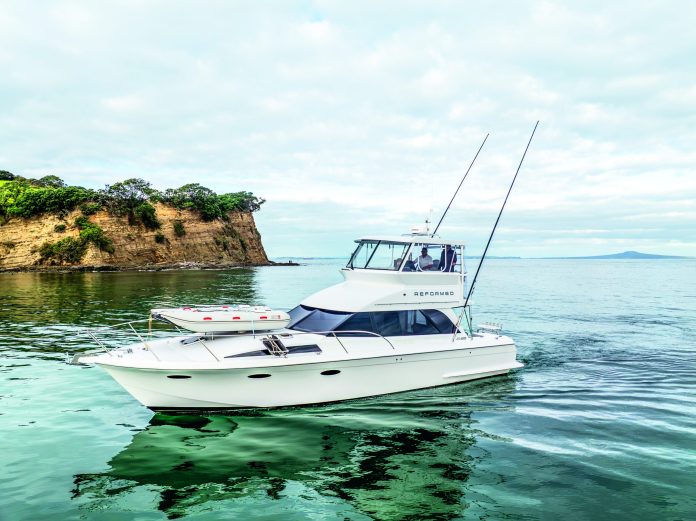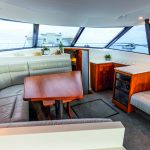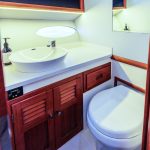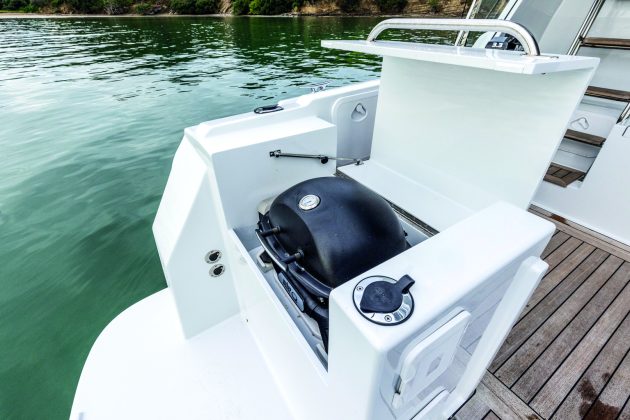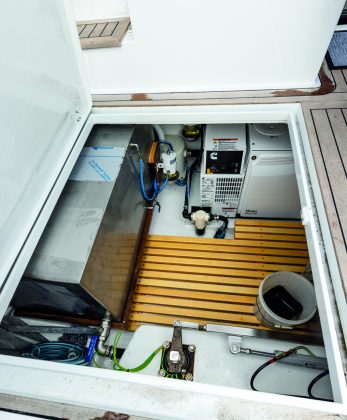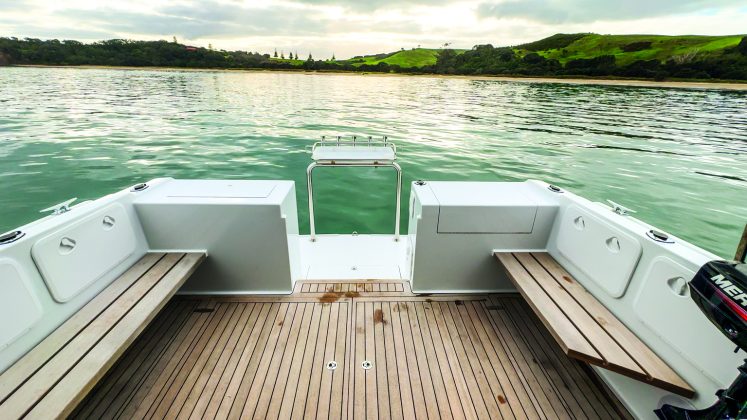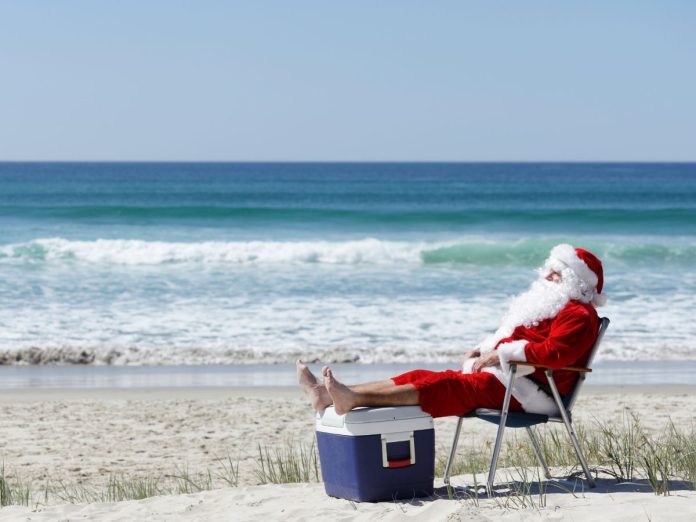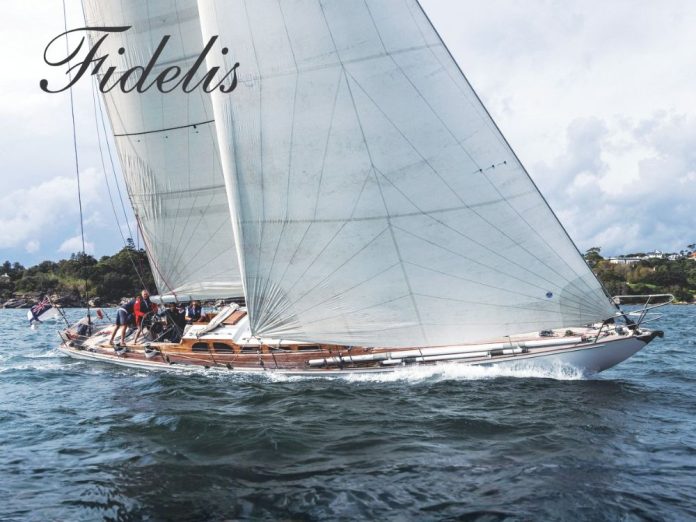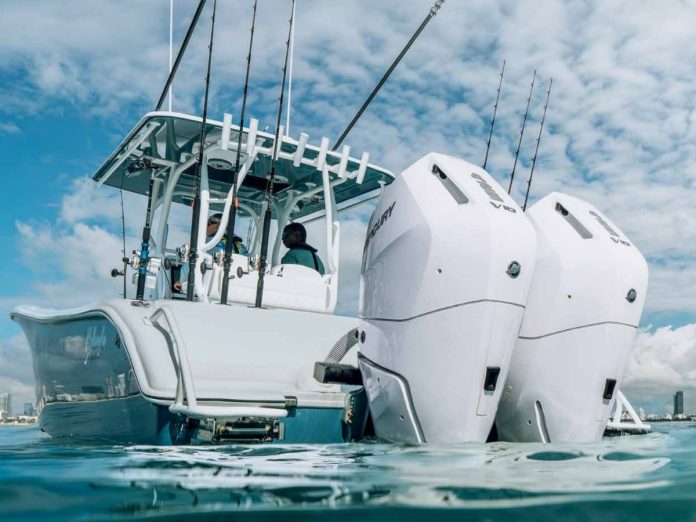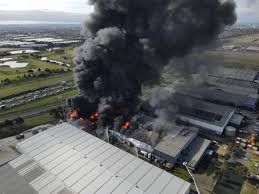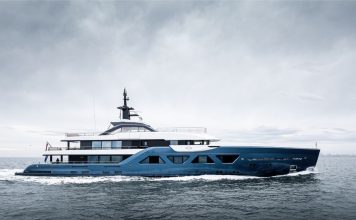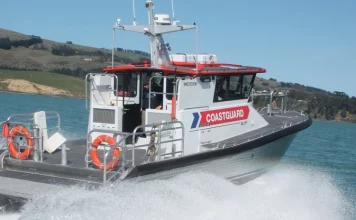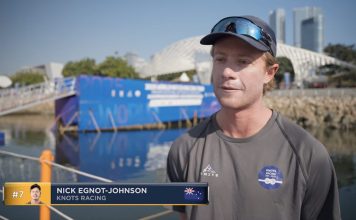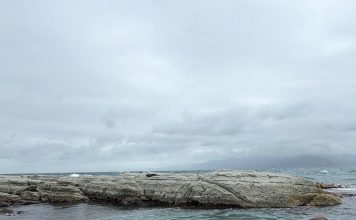The Formula 4000 is a 40-year-old design by Jim Young, built and marketed by his brother Alan as a classy, high-performance launch. Alan Young Boats built around 50 of them between 1984 and 1987.
It turns out this particular example was built to MOT survey with a High Modulus specified layup of foam sandwich Divinycell and Kevlar reinforcement. Her original owner had a property on Waiheke Island and wanted to get there at 27 knots. Having experienced gearbox issues on his previous boat, he tried to eliminate shafts and gearboxes, so the then-named Spirit of Cowes was fitted with twin Ford Sabre 300hp turbocharged diesel engines, driving Hamilton 291 jet units.
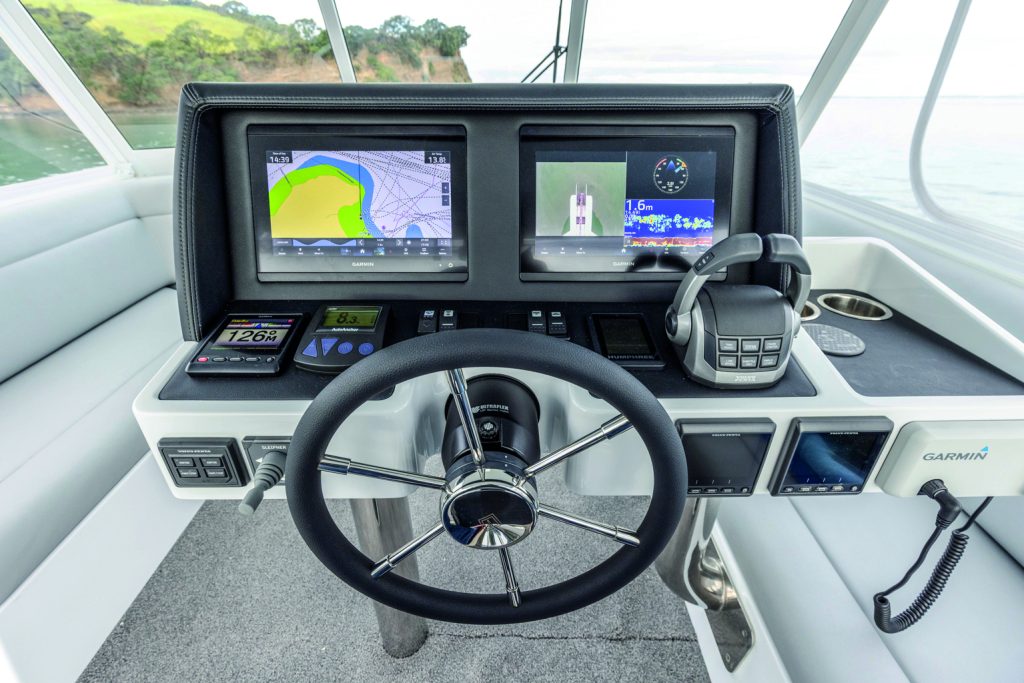
This was an unusual drivetrain combination at the time; however, besides high-speed performance advantages, the jets provided considerably less draft. A subsequent owner replaced the jet units with traditional shaft drives and rudders while retaining the Ford engines.

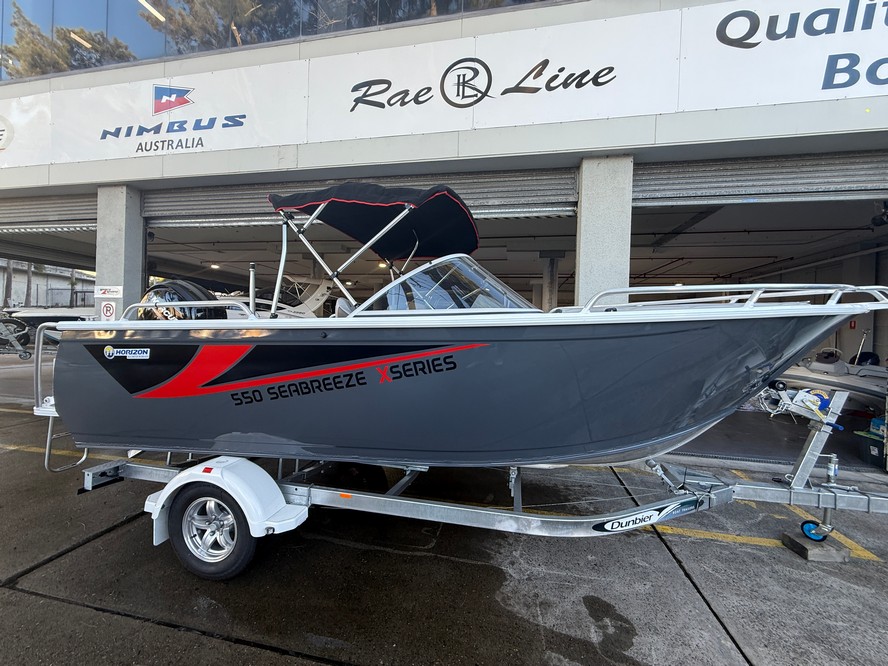
Like many launches built in the 1980s, the Spirit of Cowes had deteriorated cosmetically over time, and by 2021, she was looking decidedly run-down. It was in this condition that Braden Weber of Weber Marine discovered her and decided this would be his next restoration project.
Although better known for building new Elite launches, Weber enjoys having a restoration project underway, which helps keep his staff fully employed during quiet periods. His key principle when buying suitable projects is sticking to popular, well-respected Kiwi boats, as they usually have good bones.
At the dock
The Formula 4000 was pulled out and completely stripped, which is a far bigger job than many might appreciate. Essentially, the entire launch was gutted of engines, gearboxes, hydraulic steering, plumbing, tanks, wiring, upholstery, and most of the cabinetry.
Once stripped, a careful examination revealed that the launch’s structure remained in perfect condition, and no further strengthening was required.
Unlike some 4000s, there was no delamination in the foam core bottom sections. Unquestionably, the then-MOT requirement that the bulkheads be fully glassed to the interior has helped maintain the structural integrity.
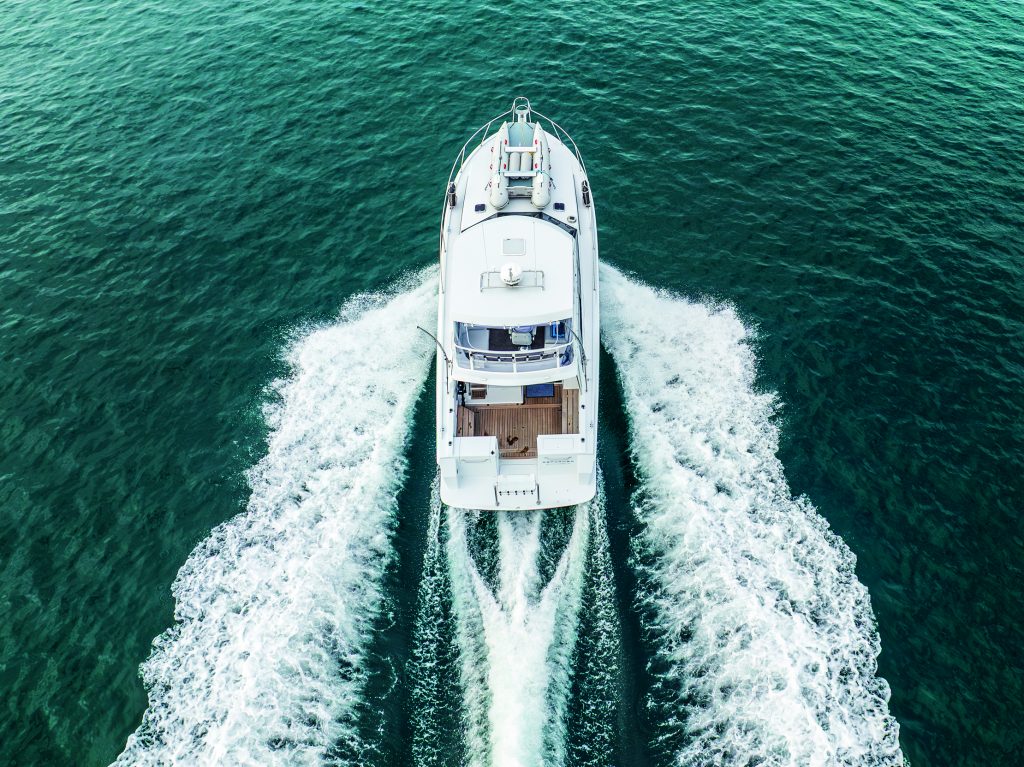
In 1980, the Formula 4000 was available with a choice of four layouts, and Spirit of Cowes was fitted with the most popular one.
This option features a twin-berth forward cabin and the owner’s double cabin aft to port. This cabin has an adjacent ensuite, which can also be accessed from the passageway. There is a second, smaller head compartment located aft on the starboard side, and just forward of this are a pair of open bunks.
Weber retained the original layout, which avoided the need to modify the bulkheads. However, almost all the cabinetry has been replaced, along with new interior linings. The galley unit and benchtop are both new, as are the wiring, plumbing, tanks, lighting, and electrical systems.
Speaking of electrics, these have all been centralised and relocated to an impressive switchboard just inside the main cabin to starboard, allowing the entire boat to be electrically controlled from one position.
As per modern thinking, there is a strong reliance on electrical power, including an all-electric galley. Besides the three engine alternators, Weber has installed an Onan generator. The dehumidifier and air conditioning can be powered from this or, when in the marina, from the 240V mains supply.
The main cabin has a dining area on the port side, with the galley situated aft. To starboard, the original lower steering station was removed and replaced with a drinks cabinet.
The original windows have been retained; in fact, they weren’t even removed, which meant a significant time saving. Likewise, the alloy window mullions were also retained, although they were refinished.
The aluminum door and window separating the cockpit and main cabin are new, and Weber took the opportunity to make these vertical instead of the half-kinked original. The aft window can be opened horizontally to fit up against the flybridge roof, providing a spacious indoor-outdoor flow between the cabin and cockpit when the door is open and locked back. A fridge and a Weber BBQ have been fitted seamlessly into the cockpit area; the latter is operated from the boarding platform, which keeps the cook facing forward.
Speaking of the boarding platform, Weber added 500mm to the hull under the platform, which was, according to him, about as much as the hull could take without adding too much buoyancy aft and adversely affecting the trim.
The flybridge is accessed through a ladder to port and has been completely remodelled to now feature a solid GRP hardtop. Up here, the sole driving station is aft, with wrap-around seating forward, which allows the helmsperson to communicate easily with guests. A fridge has been incorporated into the wrap-around seating. The front windows are fixed armour glass, with roll-up plastic clears around the other three sides of the flybridge and there’s 1.8m headroom throughout.
Downstairs, in the power department, the elderly Fords were replaced by a pair of 300hp Volvo D6 engines, which are turbocharged and aftercooled. Fitted with ZF68 gearboxes, the engines drive reprofiled, four-bladed propellers through the original shafts and struts.
Given the hull’s shallow deadrise of 12 degrees, it’s unavoidable that the twin engines are mounted close together, and it’s a snug fit between them. However, with the cabin floorboards removed, access to the service points from the top is relatively easy, and there is plenty of room at either end. The twin rudders have been retained and upgraded with new hydraulic steering and an integrated autopilot. The final stage in the restoration was a name change to Reformed, which seems very appropriate.
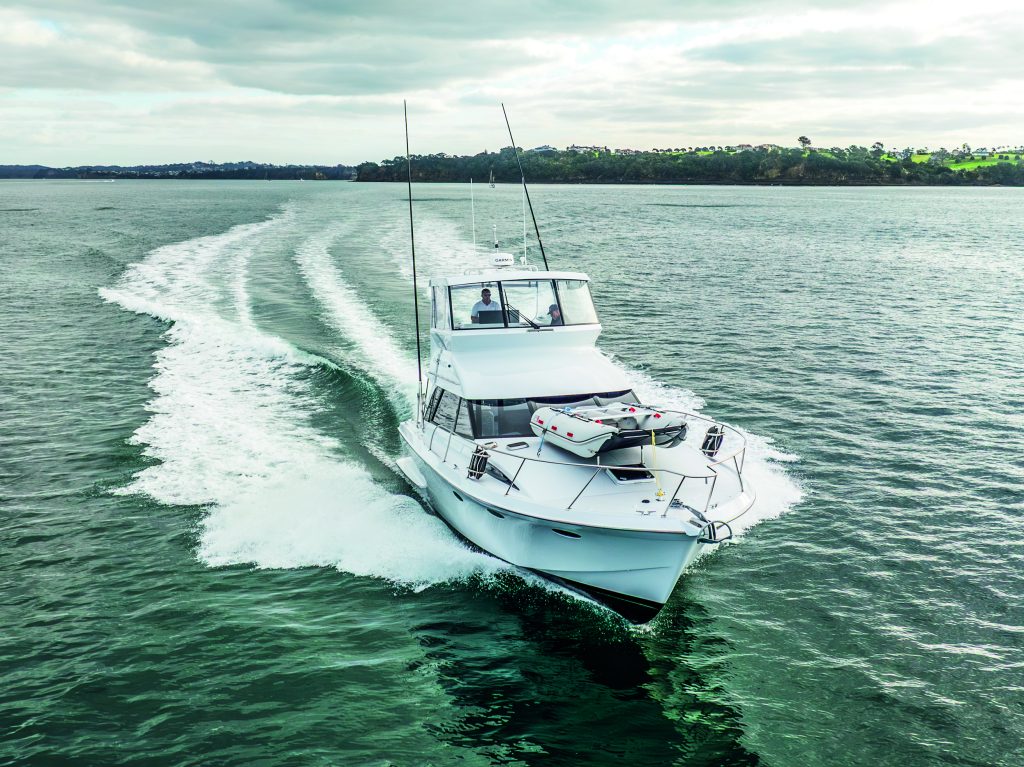
On the water
With the twin Volvos barely off idle, manoeuvring Reformed from her Gulf Harbour berth and out into the fairway was a doddle. There is a substantial bow thruster, but there’s no need for it unless the breeze is up.
Once out into open water and with throttles pushed forward, Reformed lifted smoothly onto the plane and up to her usual cruising speed of 18 knots. At this speed, the engines are spinning at 2,600rpm, just where the torque begins to taper off. The hull has an efficient planing shape; as can be seen from the fuel burn chart, varying the engine revs from 2,000 to 3,300 only changes the litres per nautical mile consumption by 1.1 litres.
The enclosed flybridge offered an excellent vantage point for sightseeing, with generous seating and easy communication with the helmsperson. The engines were never intrusive, just the pleasant hum of a pair of straight-sixes content in their work.
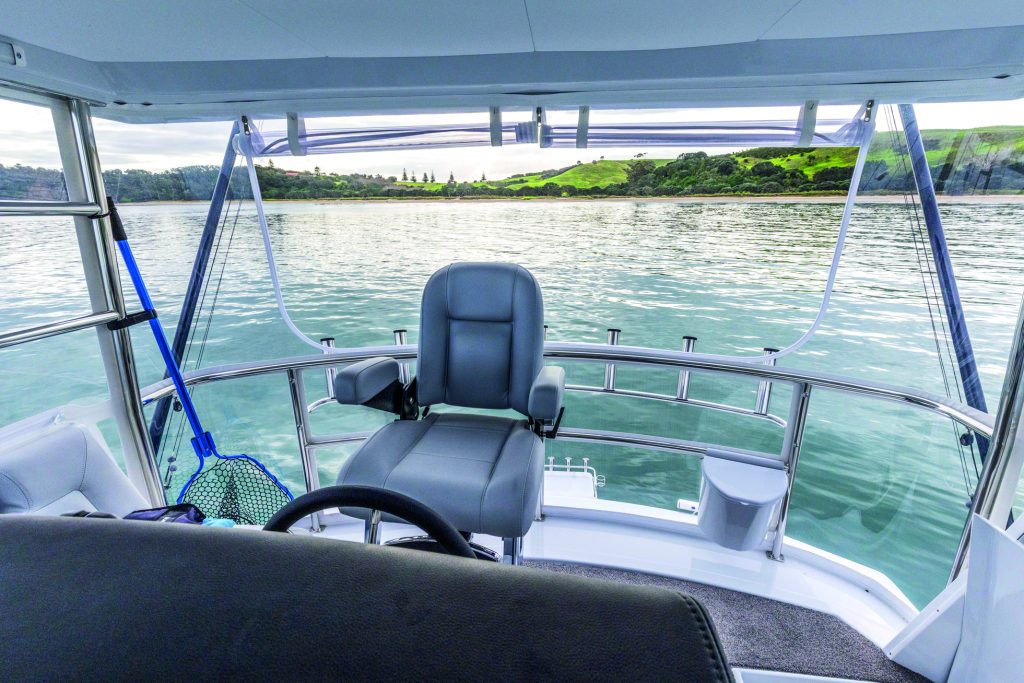
No question, the helmsperson has the best seat in the house – a superbly comfortable chair with full 360-degree visibility, chartplotter and fishfinder screens close at hand, and the engine, bow thruster, and anchoring controls within easy reach.
One notable feature among many is that the Volvo fly-by-wire engine controls offer the option to operate both engines from a single lever. This provides perfect engine revolutions synchronisation and requires only a single button to activate.
The Humphree Lightning trim and stabilisation system was highly impressive. While this system allows complete manual control, we left it in automatic mode for the entire test. In this mode, the system provides automatic stabilisation of the launch’s trim, list, pitch, roll, and turning performance, from idle to full throttle, and everything in between.
The Humphree system is sophisticated, yet in auto mode, it requires no input. A graphic bar graph of the two tabs on the display shows the system working, and it was amazing to see how quickly it responded, probably faster than a human, unless you’re an America’s Cup flight controller. Unquestionably, the days of the old trim tab flaps on the transom, with all their engineering and growth issues, are numbered.
The steering is well weighted, and while you can feel the 11 tonnes of boat beneath you, steering requires no effort. Close-quarters manoeuvring with the twin engines, despite them being so close together, was excellent, and Reformed could be spun 360 degrees in either direction on the spot. As previously mentioned, the bow thruster is not usually required; however, it serves as an excellent backup for breezy conditions.
Weber had a big grin all day, and he’s obviously delighted with how this project’s worked out, as he should be.
“This is my third restoration project. I love the creative side. I could see this launch had great bones; it was just very tired. However, now that it’s finished, I am starting to look around for the next one.”
As many wives and partners will know, it’s tough to stop serial boatbuilders from moving on to their next project. It seems to be a case of ‘watch this space.’

Summary
The Formula 4000 features a well-proven, seaworthy hull, and, apart from a minor extension, the hull remains unchanged. It remains just as at home on the briny as it has always been.
The new Volvo engines are an excellent match for this hull, ensuring reliability, smoothness, and quietness.
The launch’s beam and weight comfortably accommodate a full flybridge. Making this the sole driving station has paid off; removing the downstairs station has opened up the saloon accordingly and made it a better match to the number of berths. This, along with the other modifications mentioned, has transformed the interior.
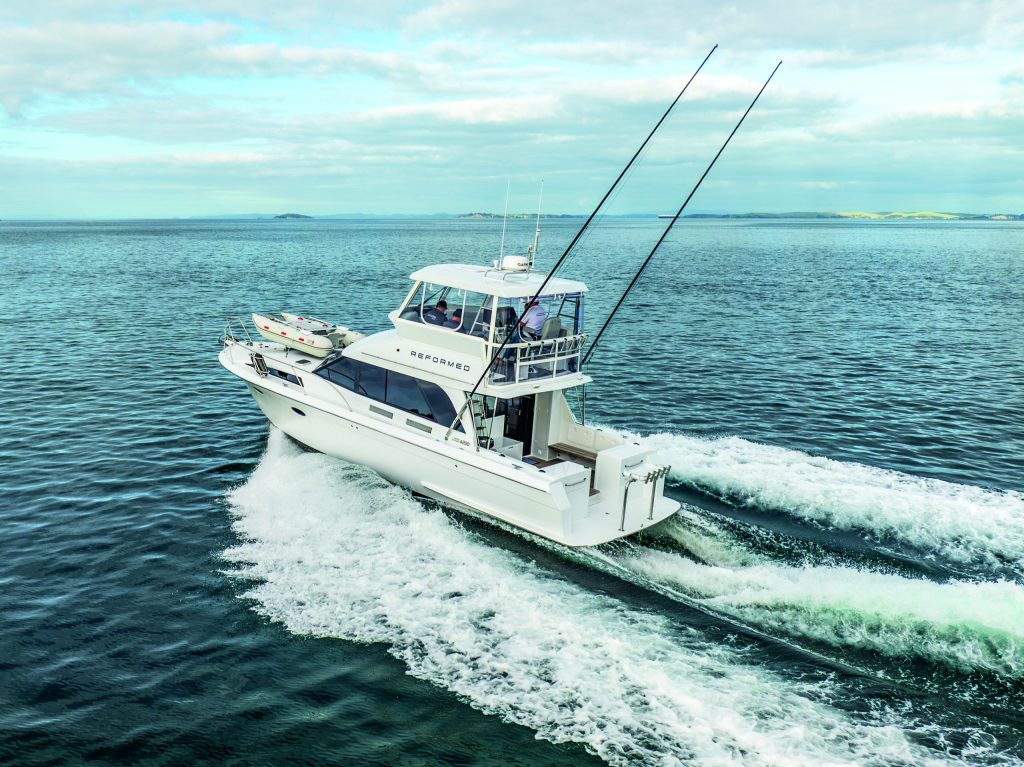
While the external styling – flybridge apart – hasn’t changed, removing the 1980s gunwale striping and other period detailing has modernised the exterior appearance, and one could be forgiven for mistaking the age of the design.
In short, Reformed has been transformed.








